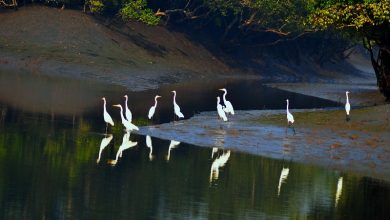
What is ghost fishing?
Ghost fishing is a technique of using fishing equipment to continue trapping and killing wildlife even after all control over the equipment has been lost. It is the destructive process of continuing to collect and kill marine species with a lost, broken, or abandoned fishing net.
What is ghost fishing gear?
Derelict fishing gear, sometimes known as “ghost gear,” refers to any lost, abandoned, or discarded fishing gear in the maritime environment. This equipment keeps fishing and trapping animals, entangling and perhaps killing marine creatures, suffocating habitat, and posing a navigational risk. One of the main types of waste affecting the marine environment today is abandoned fishing gear, such as nets, traps, and pots.
How ghost fishing devastate our ocean?
A net doesn’t stop functioning just because fishermen aren’t using it anymore. The continued entanglement of everything in their path by these nets poses a serious threat to the health of our oceans and marine life.
The deadliest type of marine plastic is ghost fishing gear because it captures wildlife without discrimination, entangles sharks, sea turtles, marine mammals, and birds, and causes them to slowly suffocate to death. Also harmed by ghost fishing gear are vital marine environments like coral reefs. Additionally, it is to blame for the disappearance of fish stocks with high commercial value, endangering both the general sustainability of fisheries and the people who depend on fish for their sustenance and way of life.
The majority of contemporary nets are composed of long-lasting synthetic materials like nylon. Ghost nets make up at least 46% of the Great Pacific Garbage Patch, according to a 2018 study published in the journal Scientific Reports. The broken-down fishing nets and lines remain; they merely fragment into smaller pieces of plastic. This microplastic is mistaken for food by marine animals, who then consume it, endangering their internal organs and expose them to toxic chemicals.
Ghost gear for tiny boats can impact propulsion and maneuverability, making sustainable fishing even more challenging. This gear also has a direct human cost, especially for smaller fishermen who are attempting to be good stewards of the ocean.
How to tackle?
Potential solutions exist that might significantly lessen the quantity of abandoned fishing gear in the oceans, prevent plastic from entering food webs, and lessen the overall impact of marine pollution on the fishing sector. Nearly half of all the plastic garbage that ends up in the ocean may be caused by lost or dumped fishing gear. Preventing any loss of fishing gear to the water is of utmost importance. For marine plastic recycling to rise, fishermen must get involved. Making fishermen aware of the fact that ghost nets will not be defeated if non-biodegradable fishing gear is left at sea is of utmost importance.
The creation and adoption of substitutes must be sped up, along with tracking fishing gear and providing financial incentives for recycling. Marking fishing gear with electrical and acoustic tags is one way to stop people from leaving it behind. This would make it more likely that it would be recovered and that those who left it would be held more accountable.
Farhana Islam
Agriculturist, Researcher

